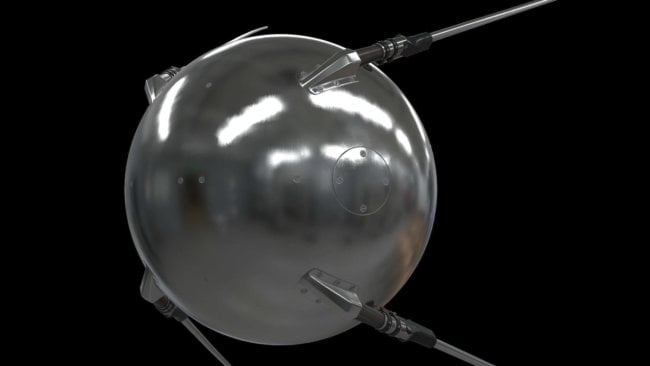
4 October 1957 the Soviet Union stunned the whole world by launching into space the first artificial satellite. This week we’re celebrating its 60th anniversary. A small ball that transmits a radio signal, caused panic among ordinary Americans as they imagined Russian nuclear bombs in orbit. The U.S. military was alerted. Soviet technology took them by surprise. “Sputnik 1” pulled the trigger which started the space race.
As is often the case, if the Soviet Union or the United States took several other decisions at the time, history would have been completely different.
Khrushchev just wanted the rocket
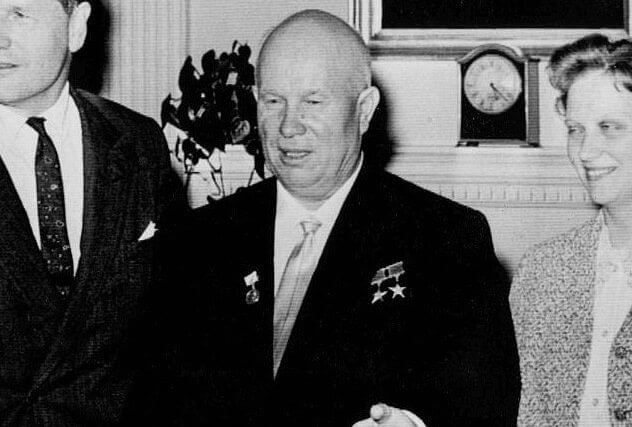
When Nikita Khrushchev led the nation in 1953, he had a problem. The cold war was in full swing, and the Soviet Union felt very vulnerable. If I broke out a real war, American aircraft carrying nuclear bombs and taking off from bases in Western Europe, a few hours could reach Leningrad and Moscow. Soviet aircraft would require much more time to get to the United States. By the time they would have reached their destinations, the cities of the USSR likely would have turned into charred ruins. Khrushchev needed a new weapon, which would save Americans from thinking that they can win a war if attacked first. He needed a missile that could hit US in less than an hour after launch.
Therefore, in 1954 the decision was made to develop the world’s first Intercontinental ballistic missile. A man who was commissioned to create this weapon, was Sergei Korolyov. The new missile designated as R-7, and it had to be big. Russian bombs were heavy. R-7 had to be able to deliver a 3-ton warhead to a distance of more than 6400 kilometers. The Soviet missile was the most worked for the Americans.
Korolev wanted to use the space
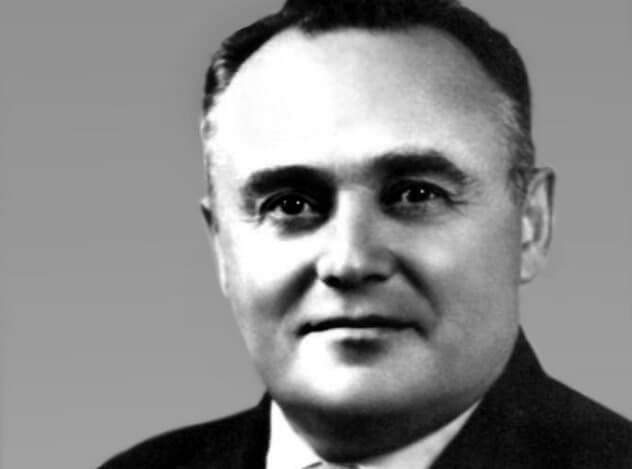
Like many men, fascinated by rockets, Sergei Korolev dreamed about space exploration, and suddenly realized that R-7 can be powerful enough to orbit satellites. In 1956, the designer Mikhail Tikhonravov proposed to launch a satellite with R-7, and in September, Korolev received permission for the development.
According to plan, the satellite had to launch into the international geophysical year, which went from July 1957 to end of 1958. However, for Khrushchev Sputnik was an annoying fly. He needed a missile that could reach the United States, everything else didn’t matter.
The problem with heat shield
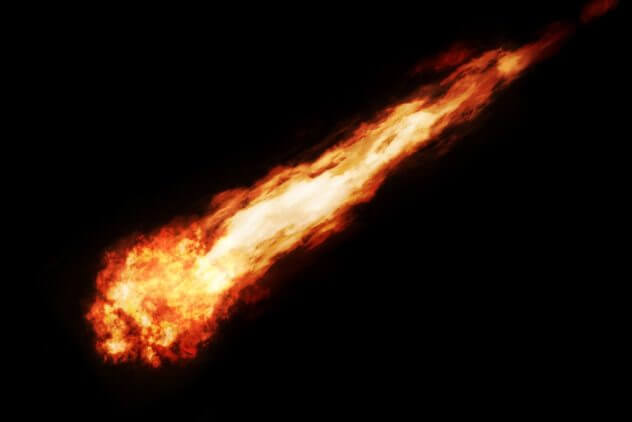
The first launch of R-7 took place on 15 may 1957. The rocket fell apart in just of 400 kilometers. The next flight, a month later, lasted only 33 seconds. Improvements were made, and 21 August, after the successful flight at 6000 kilometers, the missile hit the target. A few days later, the Agency TASS announced that the Soviet Union “successfully tested a multistage Intercontinental ballistic missile”.
The second successful test launch took place on September 7. Nikita Khrushchev had hoped for a strong reaction from all over the world, but didn’t get it. The rocket flew over the whole territory of the USSR, and tracking systems that monitor modern launches in North Korea, simply did not exist. There was no evidence and it seemed that the Western world was not ready to believe that Russia has a functioning ICBM.
In reality, there was another problem. Rising above the earth’s atmosphere, the warhead of the missile had to withstand extremely high temperatures created by the friction of the hull on the air. In both test flights, the heat shield is completely denied, so instead of hitting the target burnt wreckage had not even reached the ground. A nuclear warhead could self-destruct long before the detonation.
Several months passed before the new design of the thermal screen was ready for testing. At the same time came the details for the new R-7, ready for Assembly and launch.
The king was willing to risk
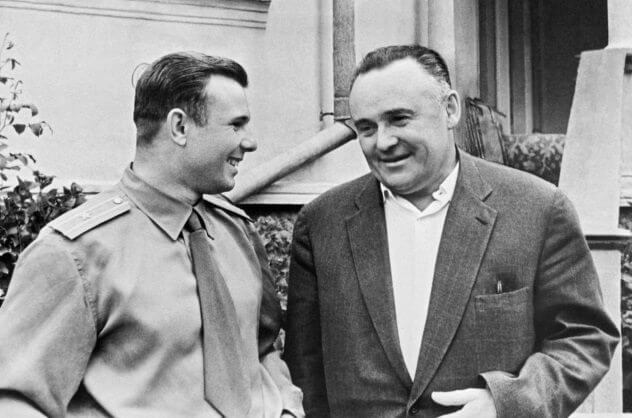
Sergei Korolev did not want to wait until the new heat shield will be ready to test. He knew what he wanted to do with the new rockets that will be built, he wanted to launch a satellite. But the Soviet military had other ideas. They wanted a fully working ICBM. The satellite launch would be a waste of time on research and stuff; science can wait.
Korolev decided to take a chance and spit on the military, referring directly to Nikita Khrushchev. He emphasized the value of propaganda, which is the first output object into orbit by individual countries, and convinced the Soviet leader to send the satellite on the next R-7.
The simplest satellite
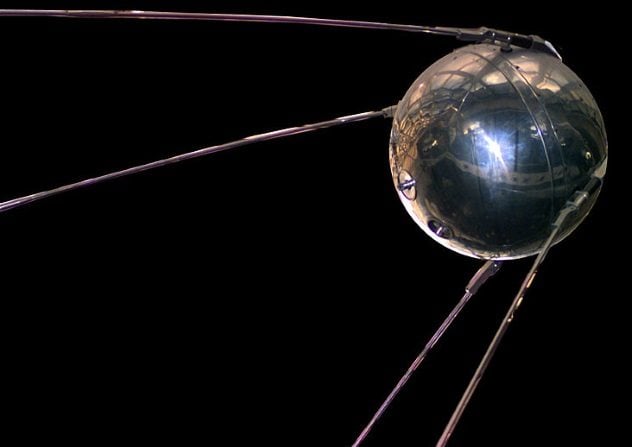
Korolev knew what he needed quickly put a satellite into orbit. Once converted the heat shield is ready, the generals will insist on a return to test missiles.
Unfortunately, the design tihonravova, which weighed 1400 pounds and contained numerous scientific instruments were far from ready. In the end, she went to space as a “Satellite-3”, but at the time, hastily looked for an alternative.
PS-1, or “Simplest Sputnik-1” was a metal sphere with three batteries and a radio transmitter with four antennas. And he passed the sound on two different radio frequencies. Did it so quickly that not even the formal design drawings. Equipment worked on sketches and oral instructions, and the engineers didn’t think about how to do better.
Queens were keenly aware of the propaganda value of a satellite in orbit and wanted his companion to be more noticeable when driving around the world. Metal sphere has been polished to a bright gleaming silver. Then, to maximize visibility added reflective prism to the outside of the last stage of the rocket R-7, as it was supposed to go into orbit.
Telegram, lost in translation

The launch was scheduled for 6 October 1957, but then the Queens received a telegram, which reported that the Americans plan to launch their own probe into space. He set out to become the first and postponed the launch for two days.
However, the reason for panic was not. The message in the telegram somehow were incorrectly translated, and no launch is not planned — only presentation at the conference. And still, on 4 October 1957 was the day that the recognized is considered the beginning of the space age.
The long wait
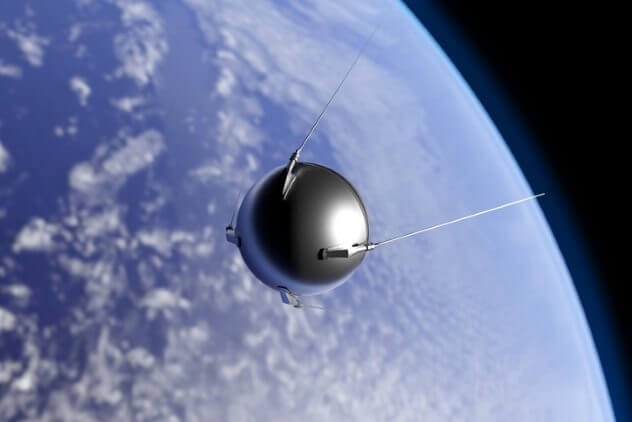
Today, almost all of the Earth’s orbit is monitored and observed, even small pieces of space debris. In 1957, the tracking of the Soviet Union came only to the Eastern coasts of the Pacific ocean.
Korolev and his colleagues excitedly waited for over an hour (of course, being whipping the cat and biting the lips) before the signal “Satellite” was caught from the West and he completed his first orbit. Only then they learned that the launch was held successfully, and passed the news to the Kremlin.
If Queens were an American, he instantly became famous. But he remained anonymous. In the USSR it was called “main designer.” His real name was not revealed until his death, and the complete story of R-7 and Sputnik became known in the West only with the collapse of the Soviet Union.
The CIA was not scared of Sputnik flying over the USA
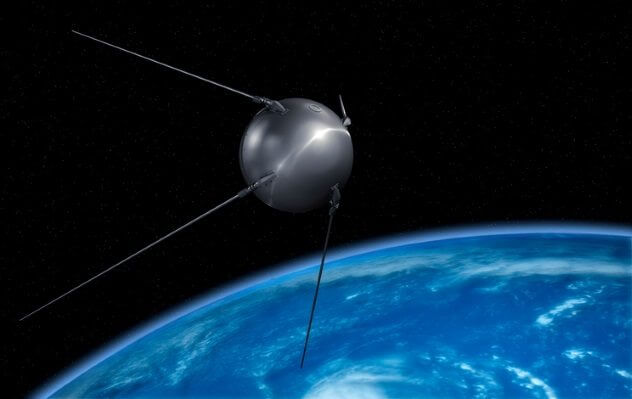
When the “Sputnik-1” has been held over North America, many people in the US were horrified. They literally saw it as a space intruder. But some in the CIA was secretly pleased. They were spies.
In the intelligence Agency developed a spy plane U-2, which made its first flight in 1995. Camera, flying at high altitude, could remove a valuable resource. However, managers missions knew that it will take time and the Russians will be able to design aircraft or missile, able to catch up U-2. The next generation of spy planes that can fly higher and faster, and will not appear immediately.
Meanwhile, the attention of the CIA fell on the idea of satellites that could be a good replacement. The project Vanguard in 1955 set the General course. Is it possible to photograph enemy territory from a satellite in orbit? By 1956, before Sputnik, the U.S. air force began the first American program of reconnaissance satellites called WS-117L.
This idea had two problems. The first was the difficult task of creating and launching spacecraft, and then returning the images to Earth. The second problem was legal. No one knew what laws come into force when the satellite passes one country over another. Is it an invasion of airspace? The U-2 flights were clearly illegal, but, according to the CIA, “most likely deny”. The plane could stray off course accidentally, and if a U-2 crashed, he had no marks, and the pilot probably would have been dead. But the companions, on the other hand, was very easy to track. American satellite over Soviet territory could trigger international reaction, and even lead to war.
“Sputnik 1” is elegantly solved this problem. If the Americans didn’t mind about moving the satellite over the US (and they didn’t mind), then the Soviet Union could not object to American satellites over its territory. Spy satellites have carte Blanche.
The United States could be the first
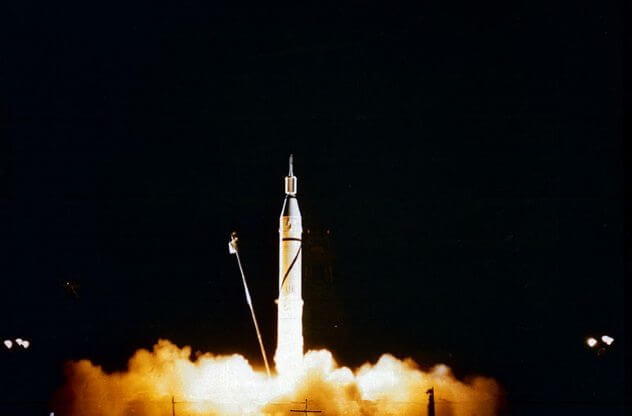
Werner von Braun was a man who was motivated by a desire to build a rocket, and he wanted to use those rockets to explore outer space. There remain serious questions about the extent to which he was willing to ignore the moral dilemma caused by the planned use of what he developed, but no doubt he was a brilliant engineer when it came to the development of new technologies.
Von Braun spent most of the time in the Second world war on the development of rockets V-2, which caused serious damage to London during the war. He then made a conscious decision to lead your team of engineers is already on the side of American forces and offered their services to the US government.
In 1953, von Braun became head of the American team that develops rockets. It has refined and increased design V-2, turning it into the first ballistic missile the Americans, PGM-11 Redstone, which soared in the same year. Redstone was developed for use on bole battlefield and had a working range of just 320 kilometres, but von Braun wanted to run with it and satellites.
In September 1954 he suggested that “the minimum satellite vehicle”. It was, in fact, Redstone, combined with the top three stages of small solid rockets. This combination, as estimated by von Braun, could put a small satellite weighing 2.5 kilograms into Earth orbit. He also requested $ 100,000 of additional funding for the development of his companion, but received a strict refusal. Opportunity number one was missed.
The period from July 1957 to December 1958 was designated International geophysical year (IGY), with the aim of facilitating scientific cooperation between the two countries. In 1955, the Soviet Union declared that in the framework of the IGY, it will launch scientific instruments into space. In the spirit of competition, not cooperation, US President Dwight Eisenhower immediately declared that the United States plans to withdraw artificial satellite to orbit the Earth in the framework of the IGY.
At that time, the U.S. army, air force and Navy — have all developed their own projects rockets. And each offered his hand to launching satellites. To the chagrin of Wernher von Braun, the Navy won the tender with a Vanguard rocket. As a consolation the army is allowed to build a modified Redstone, which is then called the Jupiter-C. This was done in order to verify the design heat shields for the return of nuclear warheads in the atmosphere on the way to the goal.
The Secretary of defense Charlie Wilson was not a fan of von Braun and was concerned that he could launch a satellite “accidentally”. So he ordered the head of the military missile program, General Bruce Medaris personally inspect the precious cargo of each Jupiter-C prior to launch to ensure that von Braun not put a “live” satellite missiles.
First launch of Jupiter-C took place on 20 September 1956. The rocket was carrying a valuable cargo, weighing 39 kg to a height of 1094 kilometers at speeds of 25 to 750 kilometers per hour. Add one small rung and relieved of the baggage would accelerate it to 28 485 kilometers per hour and put into orbit a satellite. The space age could begin in a year before the flight of “Sputnik-1”. Opportunity number two was missed.
And it so happened that the Russians launched Sputnik, by placing the Vanguard project under serious pressure. In December 1957, low-profile test launch has become a worldwide news event. The Vanguard rocket lifted several meters from the launch pad, and then Bang exploded.
The US government turned in desperation to the team of von Braun. She hurriedly assembled a new version of the Jupiter-C, including the additional step with a small valuable scientific cargo. The name of the rocket was changed to Juno and convinced the world that this is not quite the rocket. And then, on 31 January 1958, the orbit was Explorer 1 launched, and the United States finally entered the space race with the aid of the plan of Werner von Braun, which was denied in 1954 and 1955.
R-7 was a failed rocket
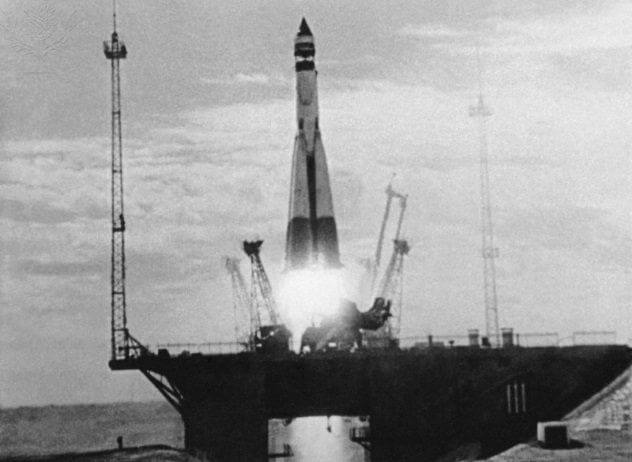
Despite the incredible success as the carrier of the satellite (the astronauts visiting the International space station today rise to the top of a stretched version of the same missile), ICBM R-7 was not very successful. The complex design of the Central rocket with attached accelerators required many days to complete. Then another seven hours, the rocket had to refuel and prepare to launch — instant response to the us attack there was no smell.
Pad was also elevated, which made her extremely vulnerable. Soviet missiles have also become smaller and lighter, so the huge R-7 obsolete almost immediately.
10 amazing facts about “Sputnik-1”, dedicated to his 60th anniversary
Ilya Hel